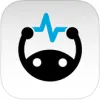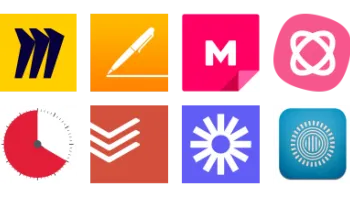Take a look inside 9 images
Brainscape - Smart Flashcards
Pros: Compelling visual metaphors encourage and monitor progress toward content mastery; even the free account comes with access to lots of topics and features.
Cons: Students self-report their confidence, which can skew teacher data; most of the really powerful features and content require a paid subscription.
Bottom Line: An exceptionally flexible tool with great potential for creating and sharing custom flash cards, but many of the features that make it unique will cost you.
Brainscape allows students and teachers to review a huge list of subjects on just about any topic. Teachers can create their own classrooms and flash card decks for their students to use or they can access over a million cards created by users along with some professionally created content. A free account allows teachers to create a public class and their own cards that anyone can use. A paid account allows for a private class along with the ability to track your students' progress and access thousands of more cards.
Teachers can then use these flash cards to reinforce lessons, prepare for tests, or introduce students to new concepts. As a tool for learning new concepts, Brainscape isn't ideal (as it would simply teach by revealing answers repeatedly), but for reviewing previously learned concepts, it's excellent and can be easily implemented into the class either via the app or web browser. And the number of topics available is diverse enough that both students and teachers should be able to find something of relevance or interest.
Brainscape - Smart Flashcards works the same as a paper flash card deck: Students read a question on one side and then click to reveal the answer on the other. They then rank how well they know the answer; a higher rating means the card shows up less moving forward. An interactive graphic is used to show students their overall mastery of the subject and their progress.
The mastery level is self-reported by the student, and there are no checks in place to see if students actually know the content or not. Furthermore, a card that is marked as a 5 (for perfect understanding) still makes its way into the deck and can be seen a number of times again before the deck is considered mastered. This could take away from focusing on areas the student still needs more practice in and could cause frustration for the student being asked a question they marked as knowing the answer to repeatedly. Additionally, once a deck has been 100% mastered, the cards continue to be shown, and there doesn't seem to be any notice of completion or mastery aside from the graphic on the side showing 100%.
Brainscape is available both on the web and as an app for iOS or Android, making it highly versatile and accessible for a wide variety of students and devices. The app and the website are well-integrated as well, so progress made on one is reflected in the other. Also, because the app and the website are designed to work seamlessly together, switching between the two is straightforward, easy, and encouraged by Brainscape itself. This means that students can access materials from a number of sources, making digital access discrepancies between students less of an issue.
The ability for teachers to make their own cards for whatever subject they're teaching means Brainscape can be used for nearly limitless subjects, topics, lessons, and more (including those with audio/video components if using a paid subscription). However, Brainscape uses a self-reported mastery method, which means data gathered by the teacher on student progress is more about how confident the student feels about the content -- not necessarily how well they actually know it.
Even though Brainscape relies on the flash card method of instruction, it doesn't fall into some of the same traps as traditional flash cards. Traditional flash cards can be great for certain content, but their biggest weakness is that they're so simplistic; they don't demand critical thinking or synthesis, and they aren't the best preparation for tests that go beyond rote memorization. However, Brainscape offers a best-case scenario for students to use flash cards. It demands that students think critically about their learning. Every card flipped requires the student to tap a color that indicates how well they know the information on the card. Of course, as with paper flash cards, it's still possible for students to flip mindlessly through these cards. However, the visual metaphor of the rainbow progress bar is compelling. It feels good to complete a deck and turn the progress bar blue, and it feels rewarding to see the numbers tick upward on the Overall Mastery pie chart on the app's Library home page. It would be nice, however, if there was some form of celebration of 100% mastery for students.



















